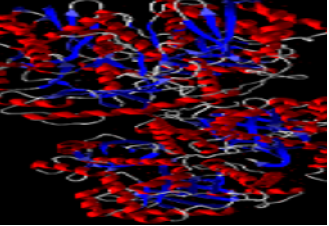Synthesis, Characterization and Molecular Docking Studies of Mn (II) Complex of Sulfathiazole
Keywords:
Sulfathiazole, Spectra Bacteria, Complex, DockingAbstract
Sulfathiazole (SFTZ) is an antibacterial drug that contains the organosulfur compounds. It is used as a short-acting sulfa drug. The metal complexes of sulfa-drug have gained considerable importance due to their pronounced biological activity. The sulfa-drugs have received great attention because of their therapeutic applications against bacterial infections. Mn(II) complex of sulfathiazole was synthesized by the reaction of sulfathiazole with MnCl2.4H2O. The Mn (II) complex was characterized based on UV, IR, 1H NMR Spectroscopy and x-ray powder diffraction. The electronic spectrum of the ligand showed intra charge transfer which was assigned to the chromophores present in the ligand, while that of the complex suggested intra ligand charge transfer (ILCT) and ligand to metal charge transfer (LMCT). In the IR spectrum of sulfathiazole, the N-H stretch of SO2NH appeared at 3255.23 cm-1. In the IR spectrum of the metal complex, this band was absent. This suggested the deprotonation of the N-H of SO2NH during the complexation reaction. This showed that sulfathiazole acted as a monodentate ligand. 1H NMR spectrum of [Mn(SFTZ)] complex showed the involvement of the nitrogen atom of SO2NH. The crystal structure of [Mn(SFTZ)] complex belongs to monoclinic system, space group P1, with cell parameters of a= 4.519Å, b = 8.704Å, c = 12.608Å, V = 493.5Å3, ? = 95.69º. Molecular docking suggested that the ligand/complex bonded effectively with the E.coli and S.aureus because their global binding energies were negative. The binding interactions of ligand/complex with E. coli and S. aureus were predicted. Molecular docking predicted the feasibility of the biochemical reactions before experimental investigation. It was concluded that sulfathiazole behaved as a monodentate ligand towards Mn (II) ion. The binding energy and interaction of [Mn(SFTZ)] with E.coli and S. aureus have also shown that inhibition of the bacterial species is feasible. The mechanism of action of [Mn(SFTZ)] with E. coli and S. aureus is now well understood.

Published
How to Cite
Issue
Section
Copyright (c) 2019 Journal of the Nigerian Society of Physical Sciences

This work is licensed under a Creative Commons Attribution 4.0 International License.
How to Cite
Most read articles by the same author(s)
- K. O. Eberendu , J. I. Iheanyichukwu, O. M. Mac-kalunta, C. I. Nwankwo, I. E. Otuokere, J. C. Nnaji, Zn(II) and Fe(II) complexes of 2,4-dinitro-N-[(Z)-[(E)-3-(2-nitrophenyl)prop-2-enylidene] amino] aniline: synthesis, characterization and In Silico SARS-CoV-2 inhibition studies , Journal of the Nigerian Society of Physical Sciences: Volume 7, Issue 1, February 2025
- B. C. Asogwa, I. E. Otuokere, Sonochemical synthesis and characterization of Fe(II) and Cu(II) nano-sized complexes of sulfamethoxazole , Journal of the Nigerian Society of Physical Sciences: Volume 6, Issue 3, August 2024







